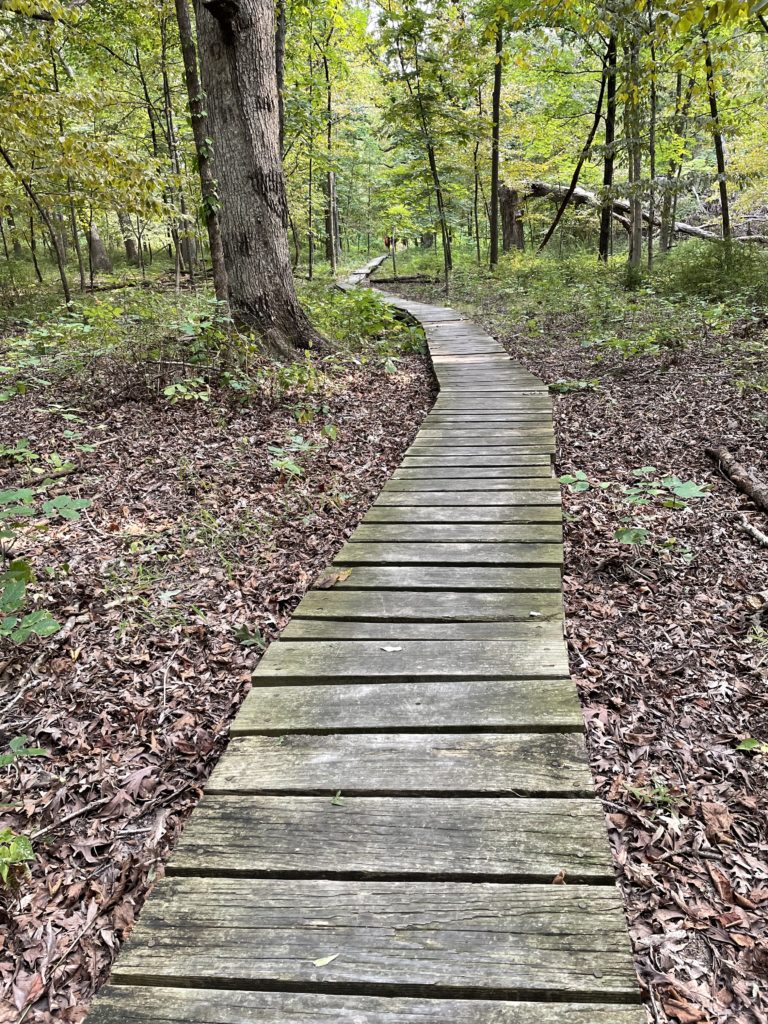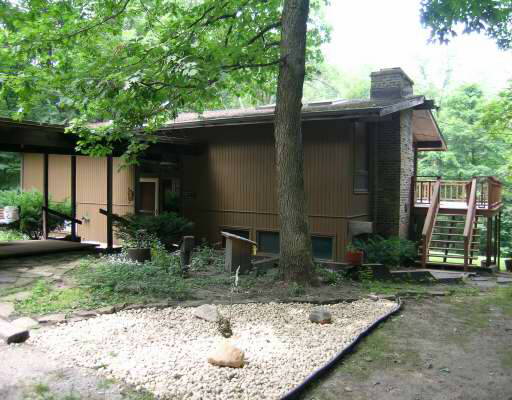
My siblings and I were lucky to grow up in a place, just at the outer edge of Chicago’s southern suburbs, where nature was close by. For a crucial period of our growing-up years, we lived in a house my parents had built on a one-acre lot in the middle of a forest. During the summers, especially, we almost lived out of doors — camping, exploring and even learning a little about the life of the woods.
Until last weekend, I hadn’t taken a long walk in the woods in decades. Most of my visits to the area have involved checking out our old house and marveling at the fact that a good-sized residence on a wooded acre could be on the market for the low six figures (or even less; the place sold for $99,000 about three years back).
But since my brother John and I are here on our long road trip, we had the rare circumstance of all four siblings being in town together. So we got together and drove down to the woods on Saturday afternoon. The immediate purpose: to do something to remember our mom, who had a significant hand in the campaign to stop the nearly one thousand acres of forest from being knocked down for tract housing in the late 1960s.

A lot has changed out there. Instead of walking out into the woods from our backyard, we accessed them by way of a trail that starts at a nature center just outside Park Forest. (The center building is an 1860-vintage Lutheran church that was moved about four miles in the mid-1960s to serve a new congregation, then later repurposed for the forest preserve.)
The woods themselves look different. Some areas are densely overgrown, others have little vegetation (but plenty of poison ivy) under the forest canopy. So ravines and gullies that used to be pretty much obscured by undergrowth are much more obvious.
A stand of fir trees that was apparently planted in the 1940s or ’50s has bolted. When we were kids, our neighbors and others used to go out and cut some of the firs for Christmas trees; now many of those trees appear to be seventy or eighty feet tall.
The Will County Forest Preserve District has installed wooden walkways through areas that are typically wet and put up a series of bridges over Thorn Creek. There are signs now marking trails through the trees. And a nice viewing platform on the edge of a seasonal wetland.
None of the improvements felt intrusive, and plenty of what we remember is intact. For instance, much of the gravel road that used to wind its way from just below our house to a Remington Arms plant on the other side of the woods is still there.
Probably the best measure of how satisfying it was to be back in the woods is that we continued walking and talking and exploring until it was nearly dark. Just as we did when we were kids.



